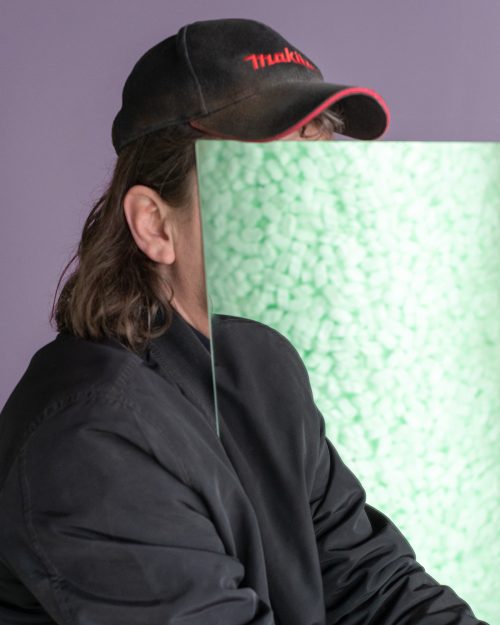
Groupshow
Chatter 'round the pond
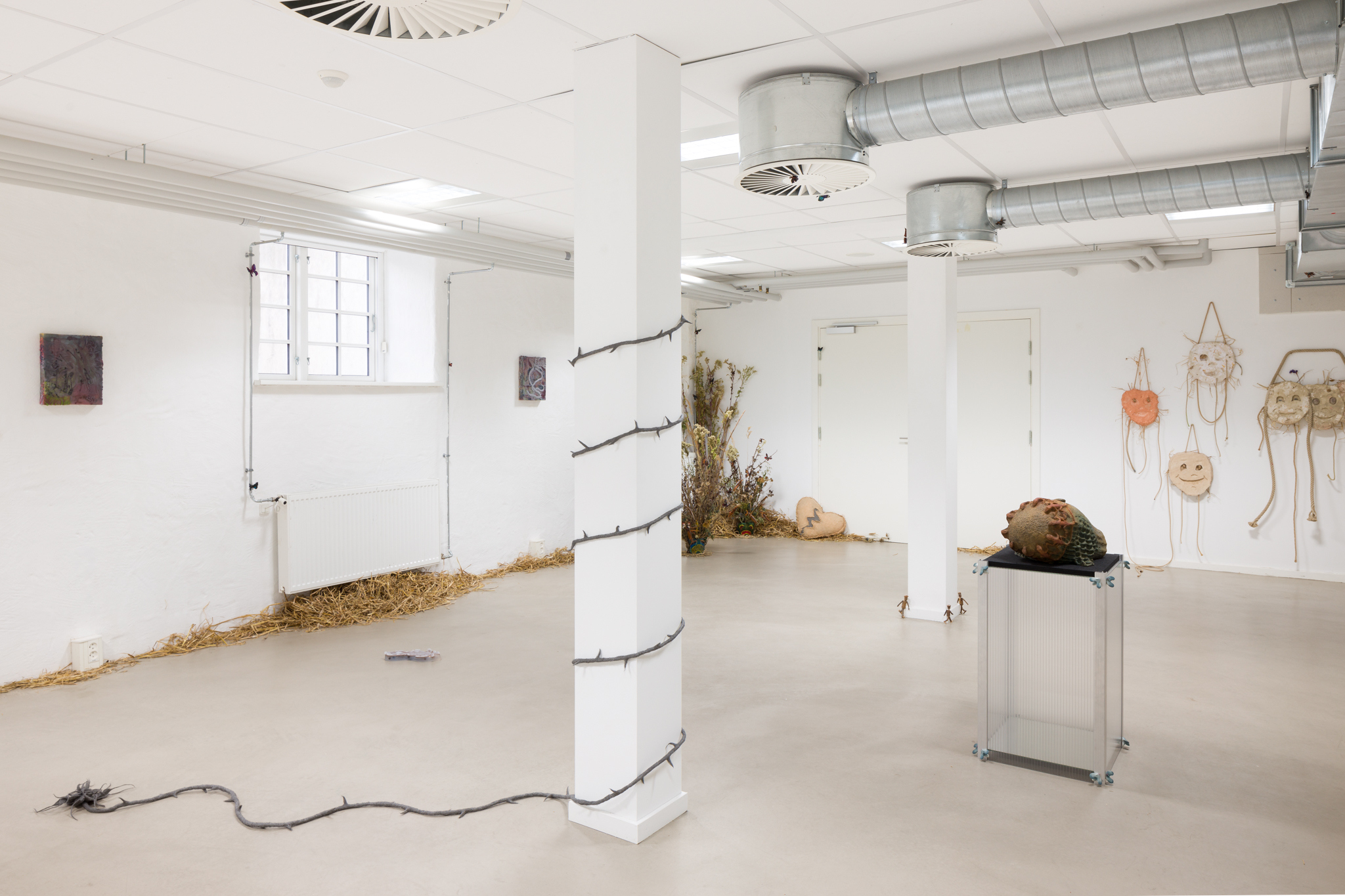
Chatter 'round the pond, exhibition view
Advertisement
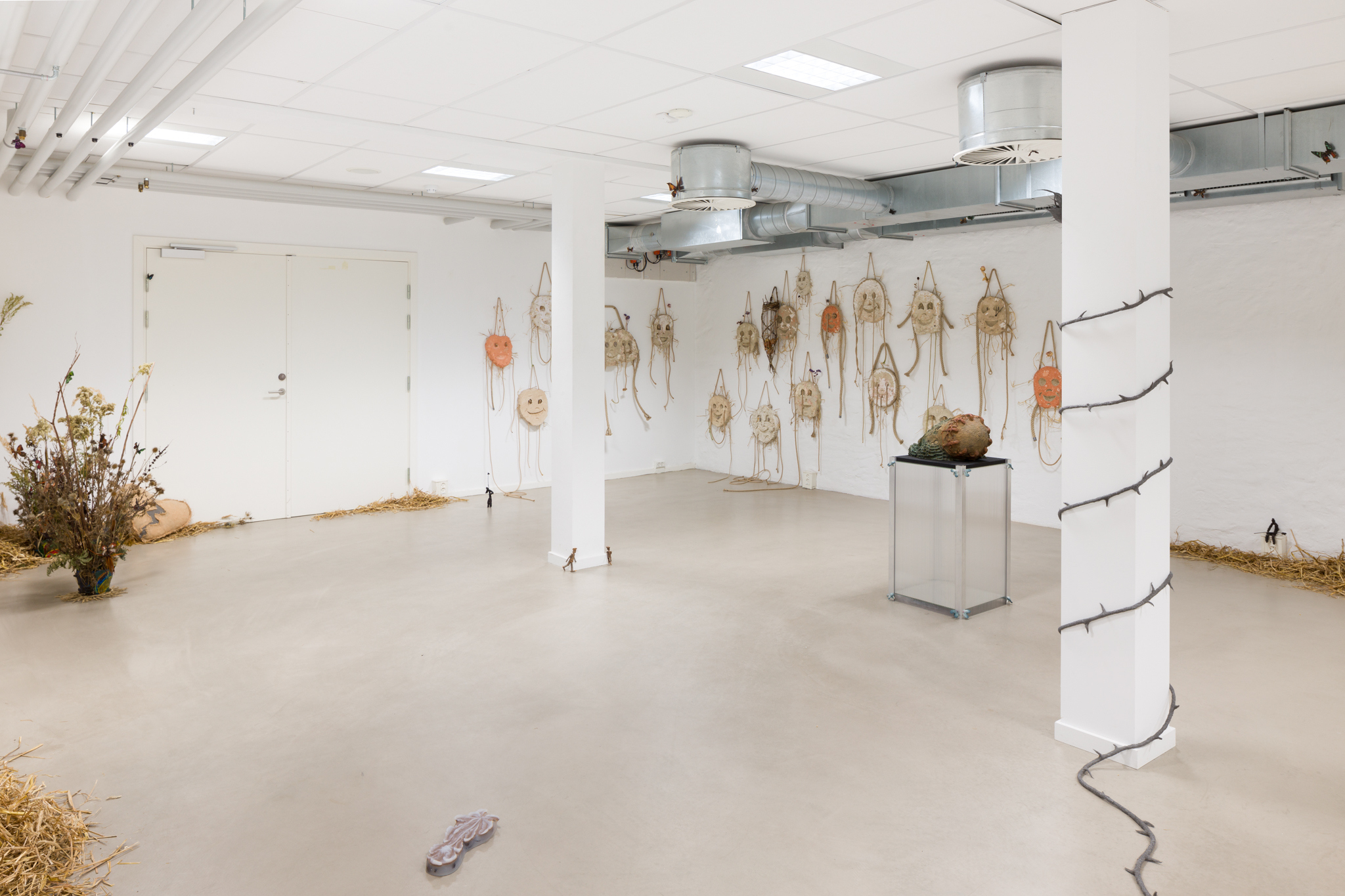
Chatter 'round the pond, exhibition view 2
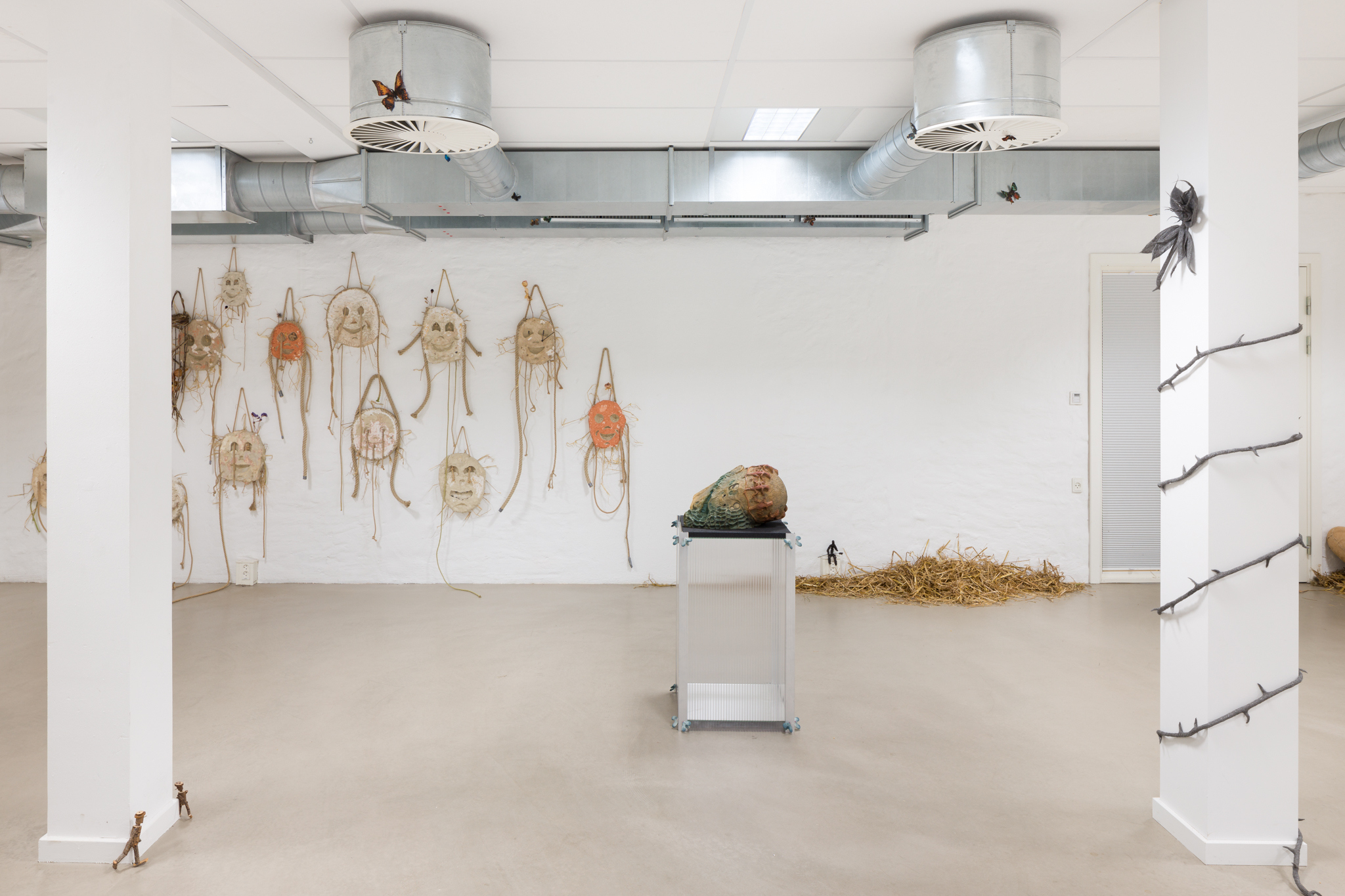
Chatter 'round the pond, exhibition view 3
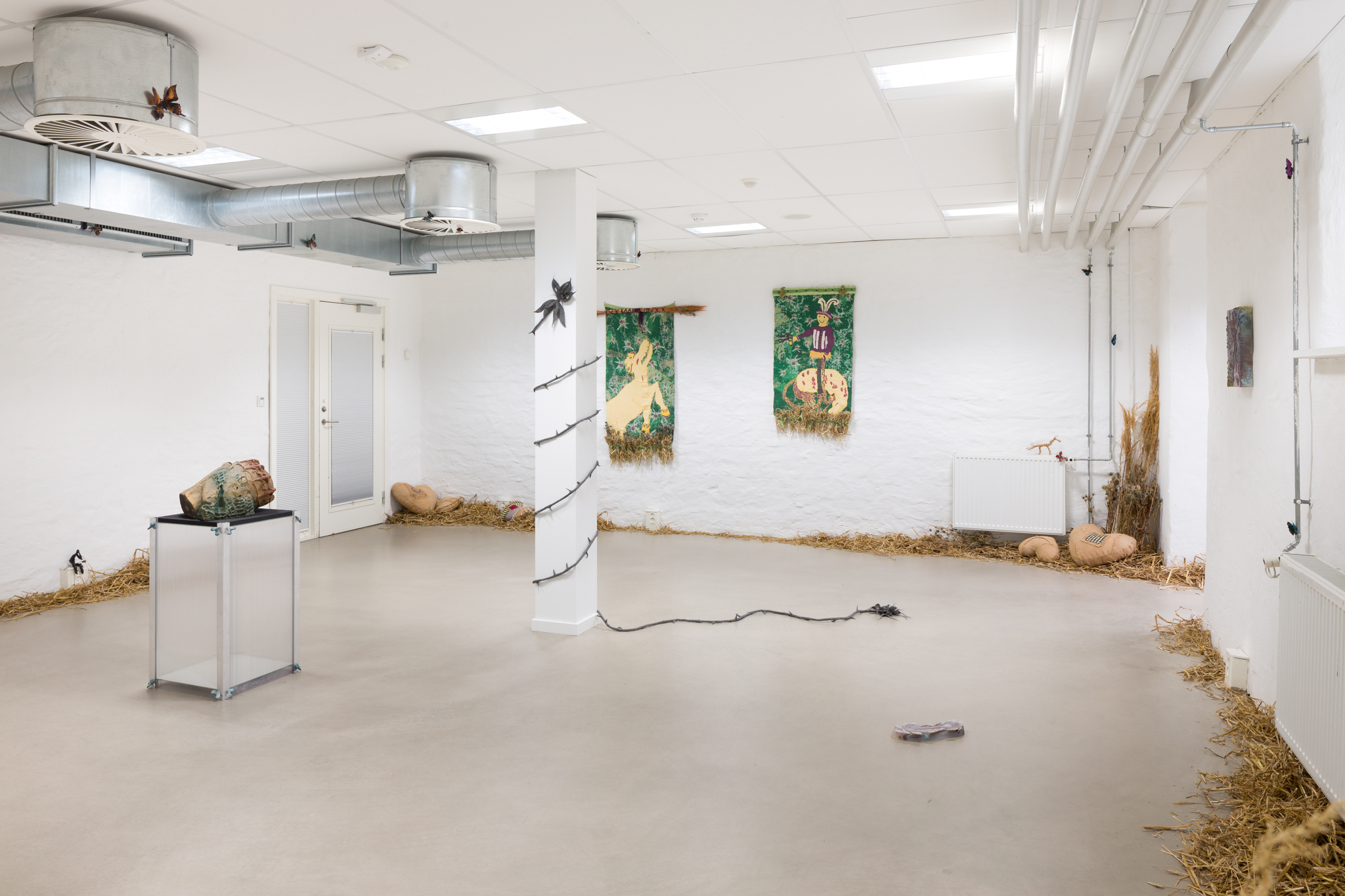
Chatter 'round the pond, exhibition view 4
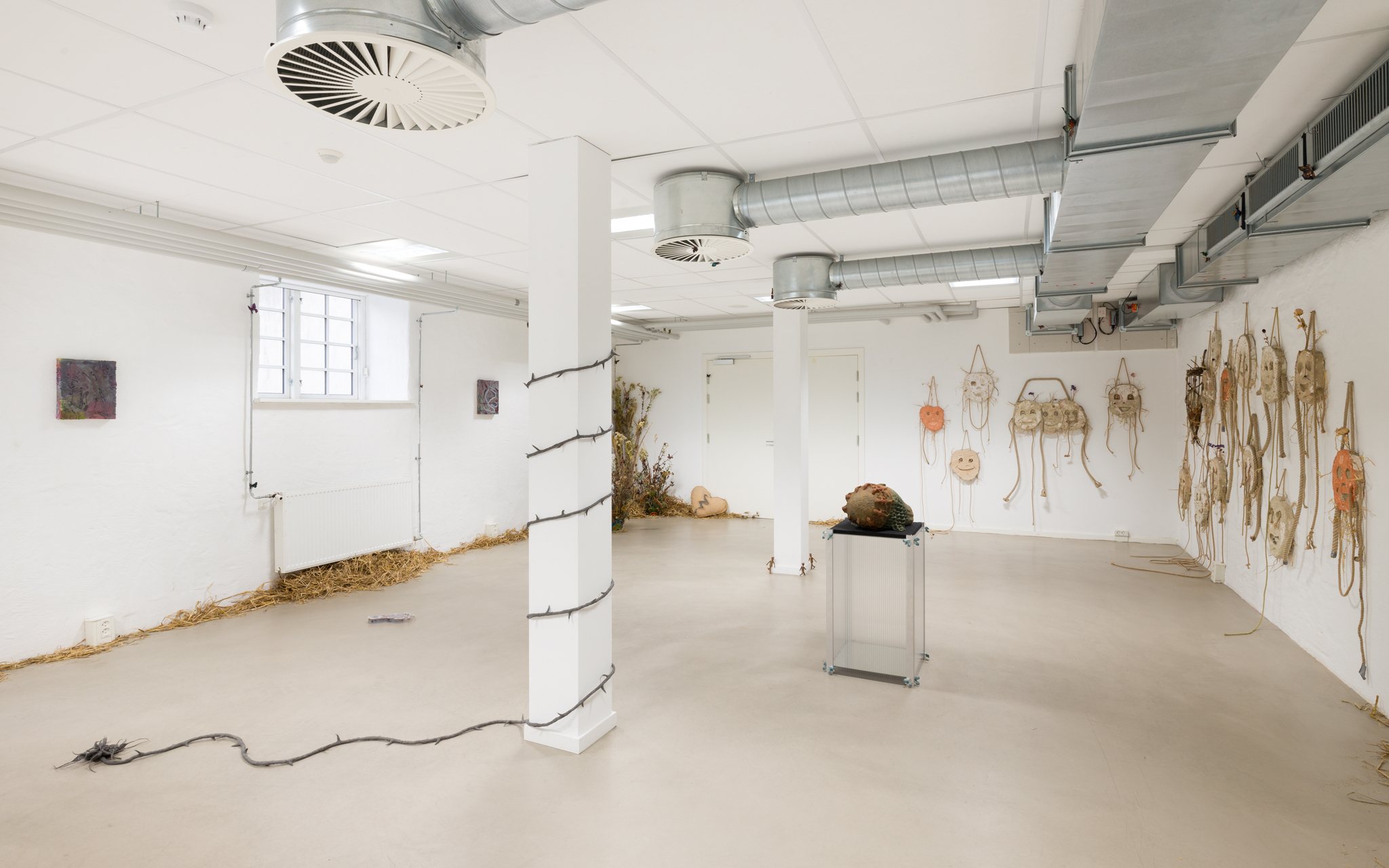
Chatter 'round the pond, exhibition view 5
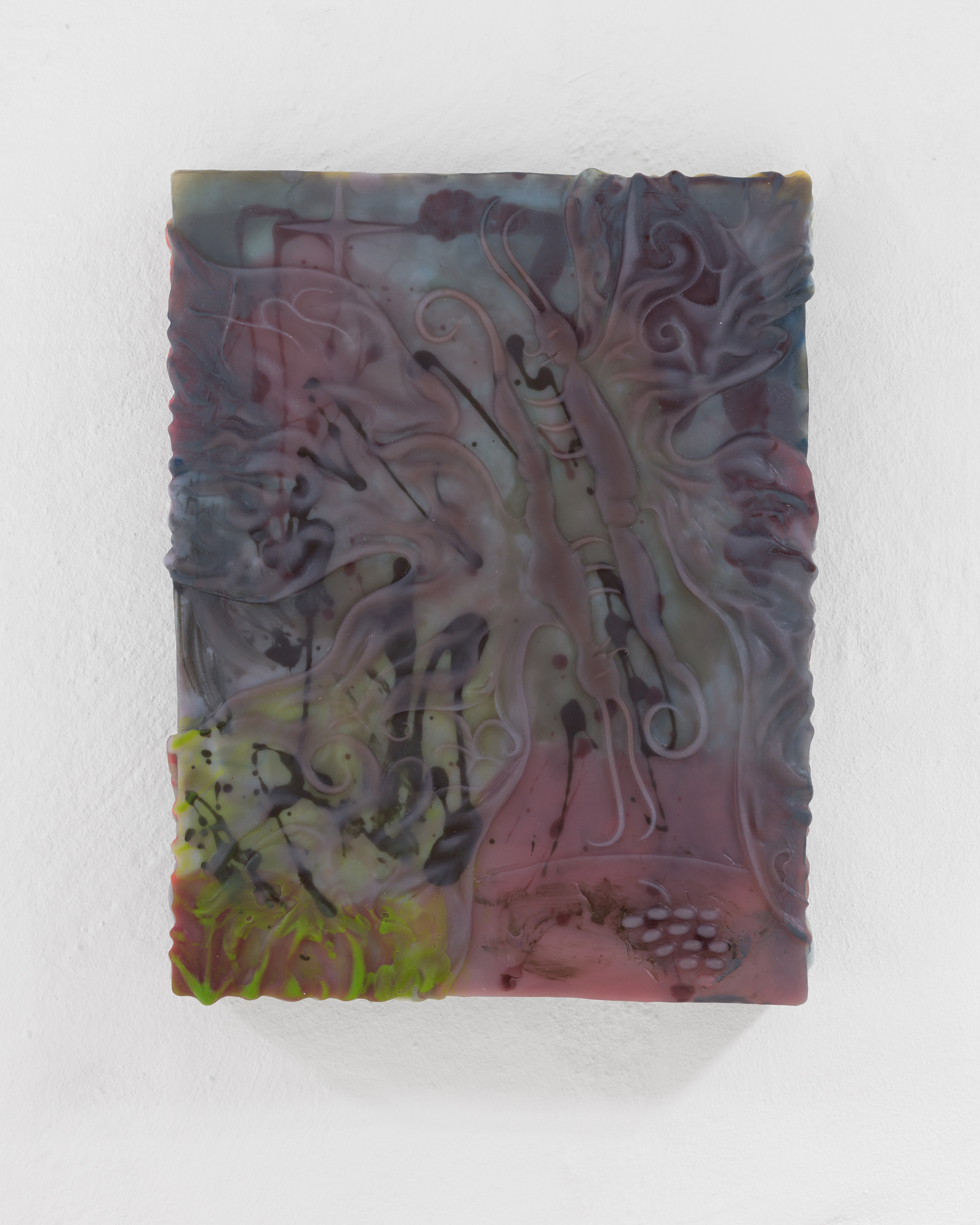
ASMA, "Beloved residue", platinum silicone, mdf, 2022
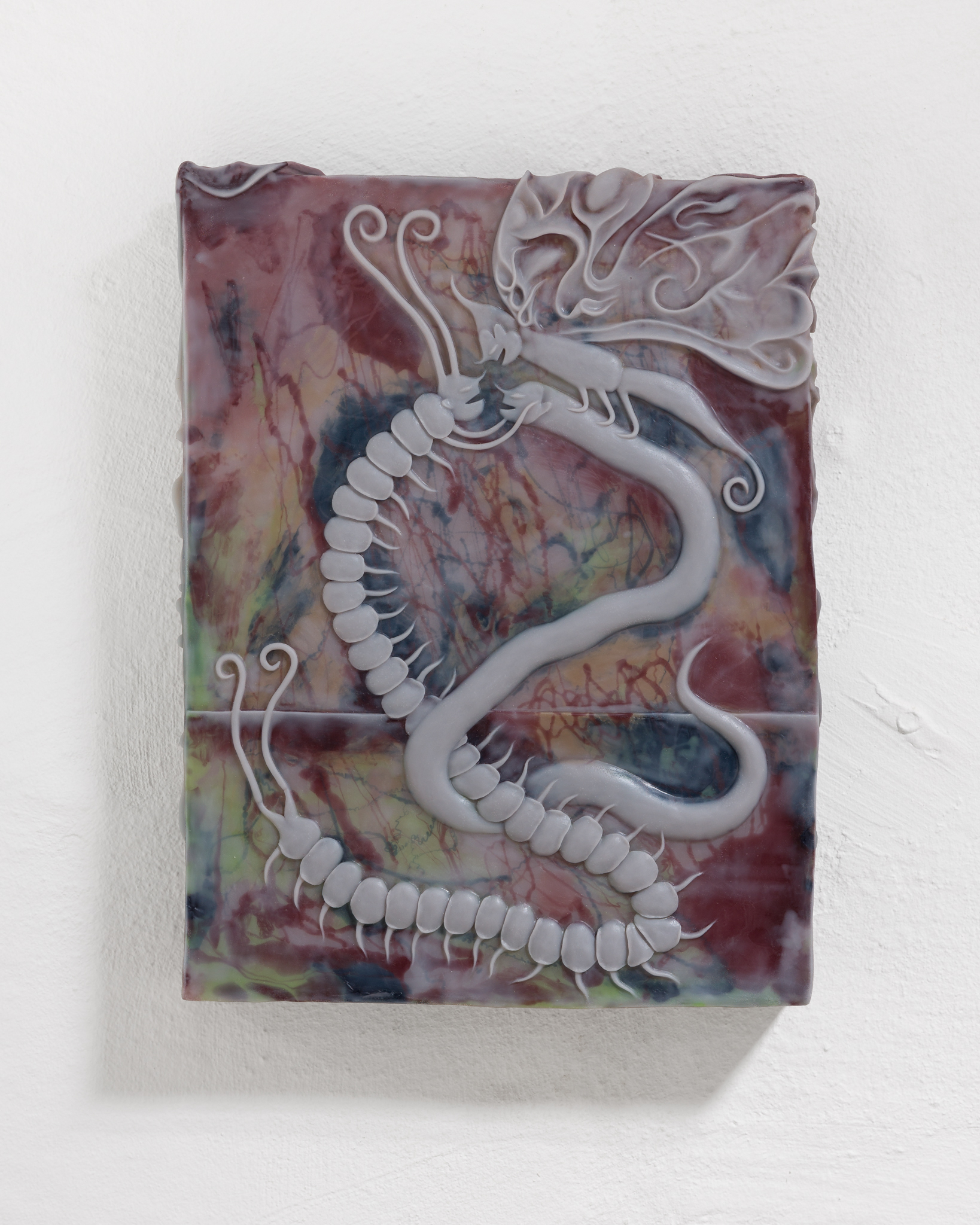
ASMA, "Diversified microbiome", plati- num silicone, mdf, 2022

ASMA, "Two girls, one stem", steel wool, 2022
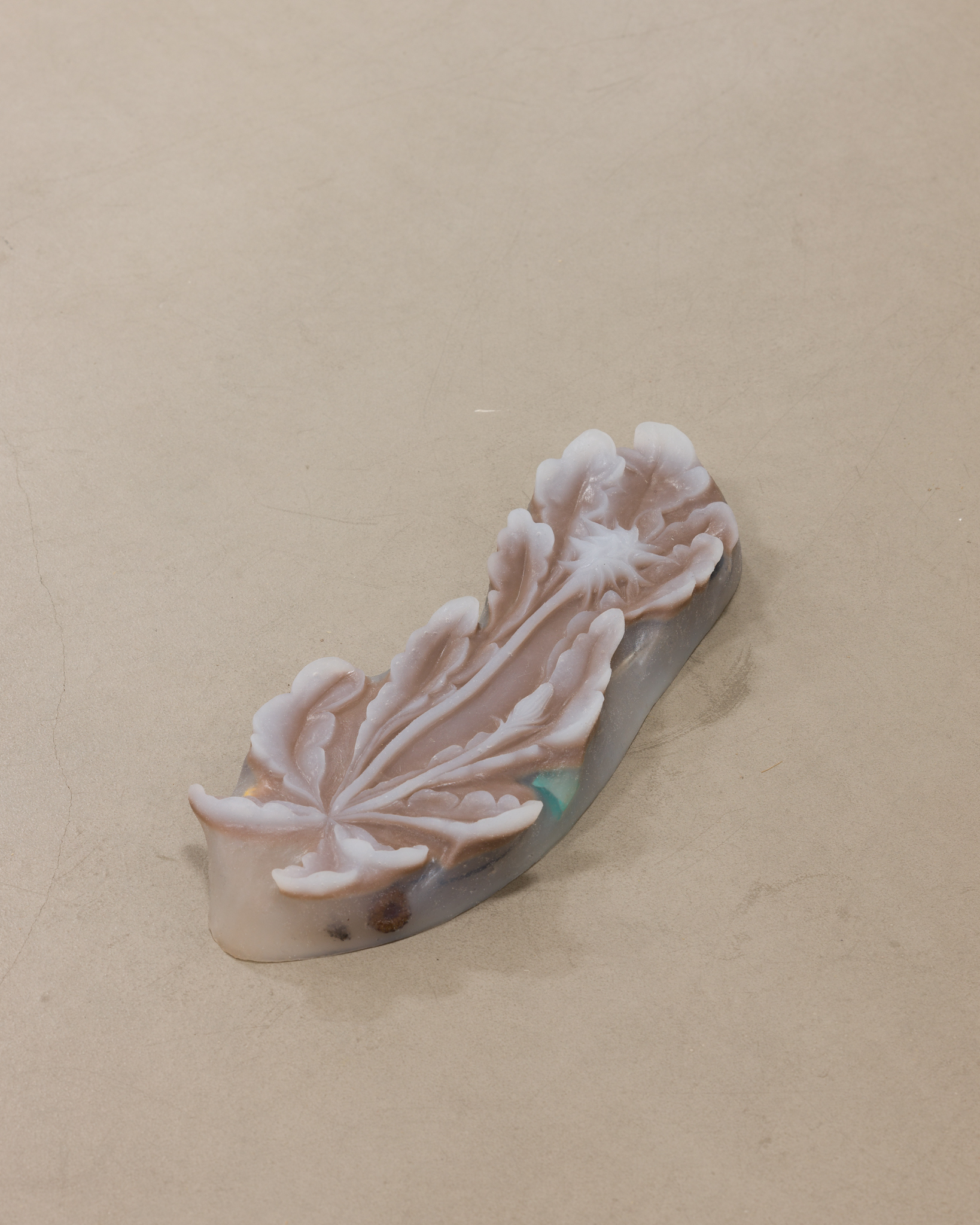
ASMA, "Mud keeper", platinum silicon, fly, headphones, juul capsule, metallic found objects, 2022

ASMA, "Two girls, one stem", steel wool, 2022 (detail)

Olivia Rode Hvass, "Rumleskaft: the Principle", mileu: hay, coins, broken hearts, flora, 2023

Olivia Rode Hvass, "Rumleskaft: the Principle", mileu: hay, coins, broken hearts, flora, 2023 (detail)
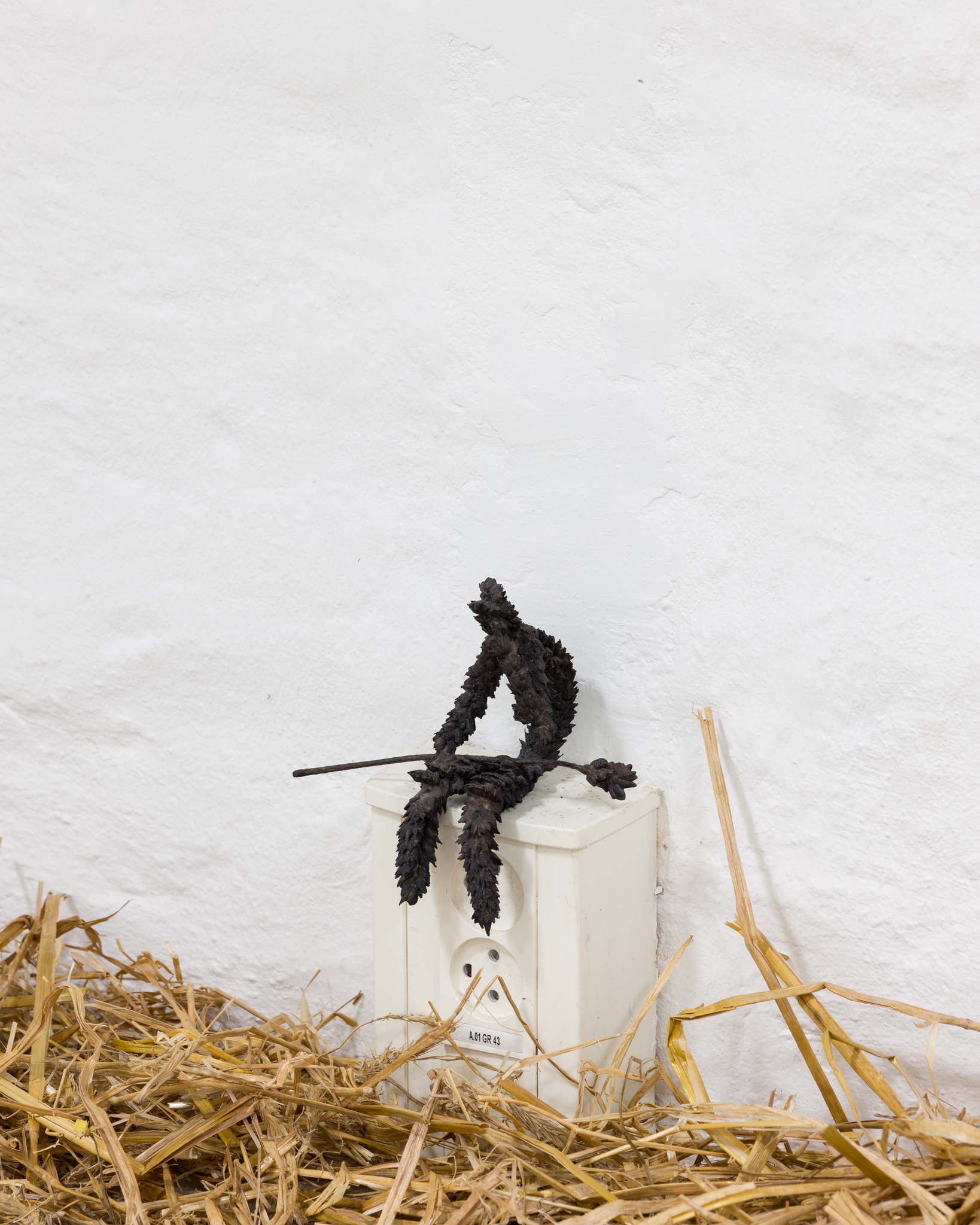
Lars Worm, "Straw Man(Tired)", bronze, 2020

Lars Worm, "Straw Man", bronze, 2020
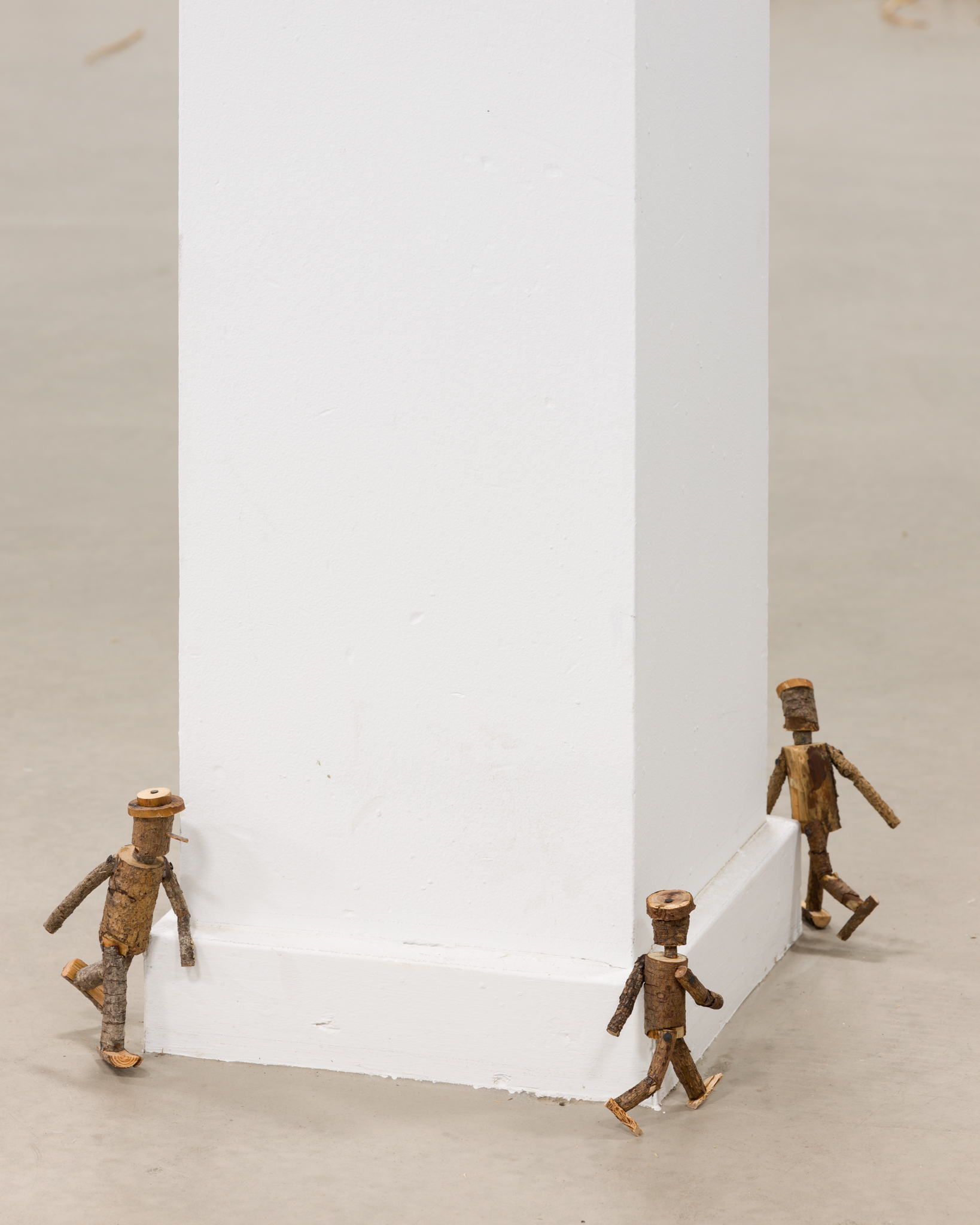
Lars Worm, "Wood Man 1-3", wood, glue, nails, 2022
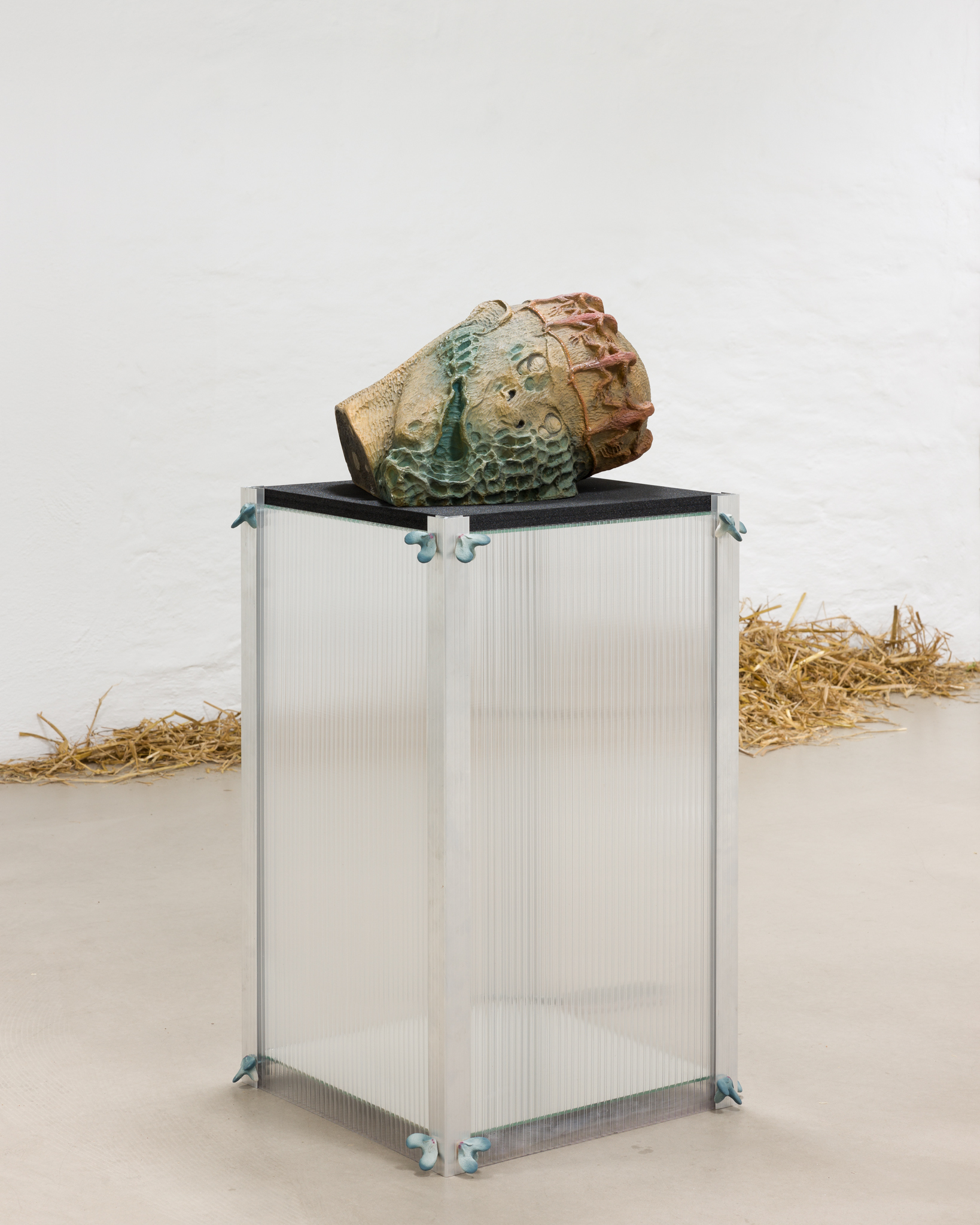
Frederik Exner, "Un-head", acrylic res- in, airbrush, polycarbonate, aluminium, profiles, foam, mirrors, 2022
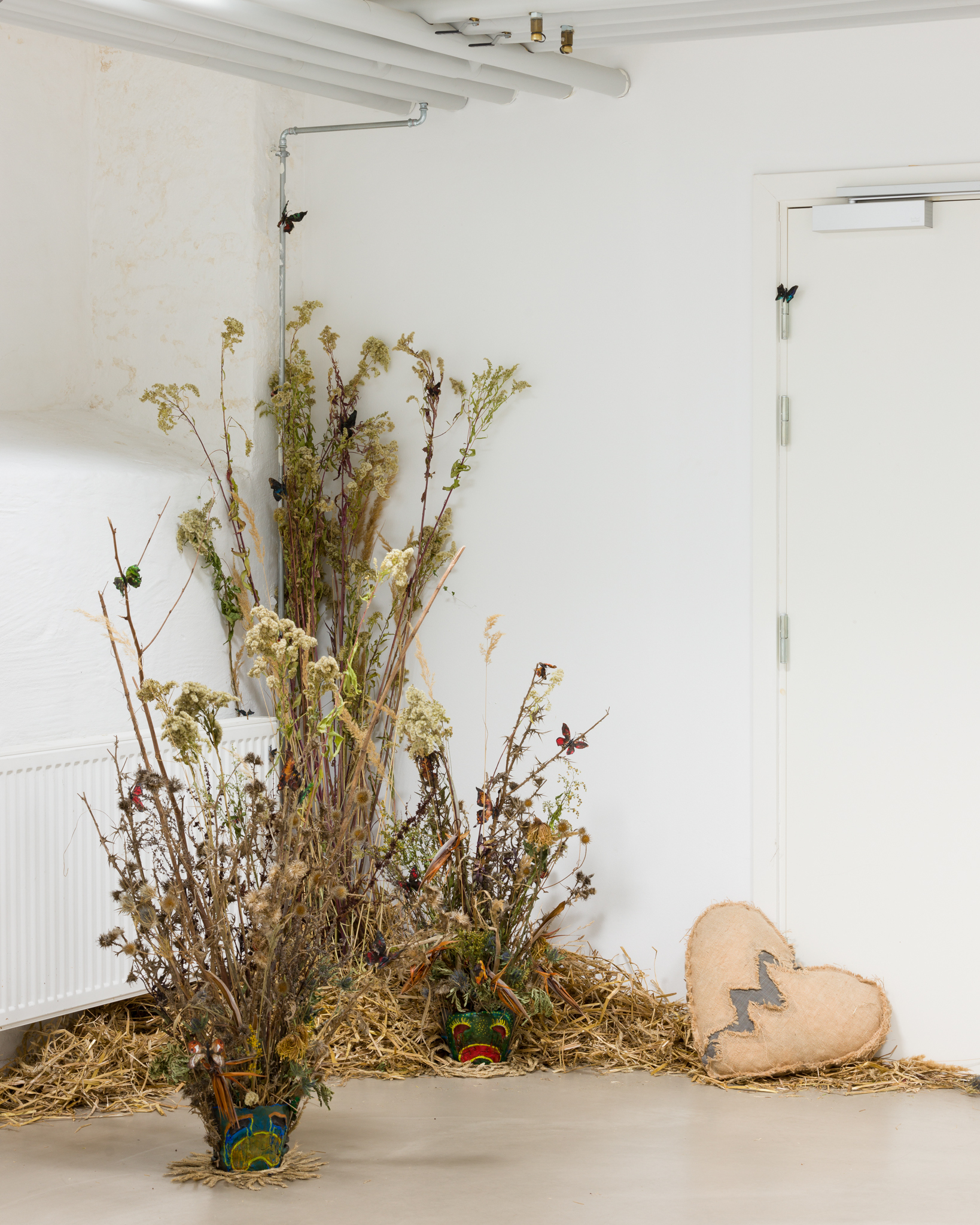
Olivia Rode Hvass, "Weep and go", self hardening clay, dried flowers, hay, butterflies, oats, 2023
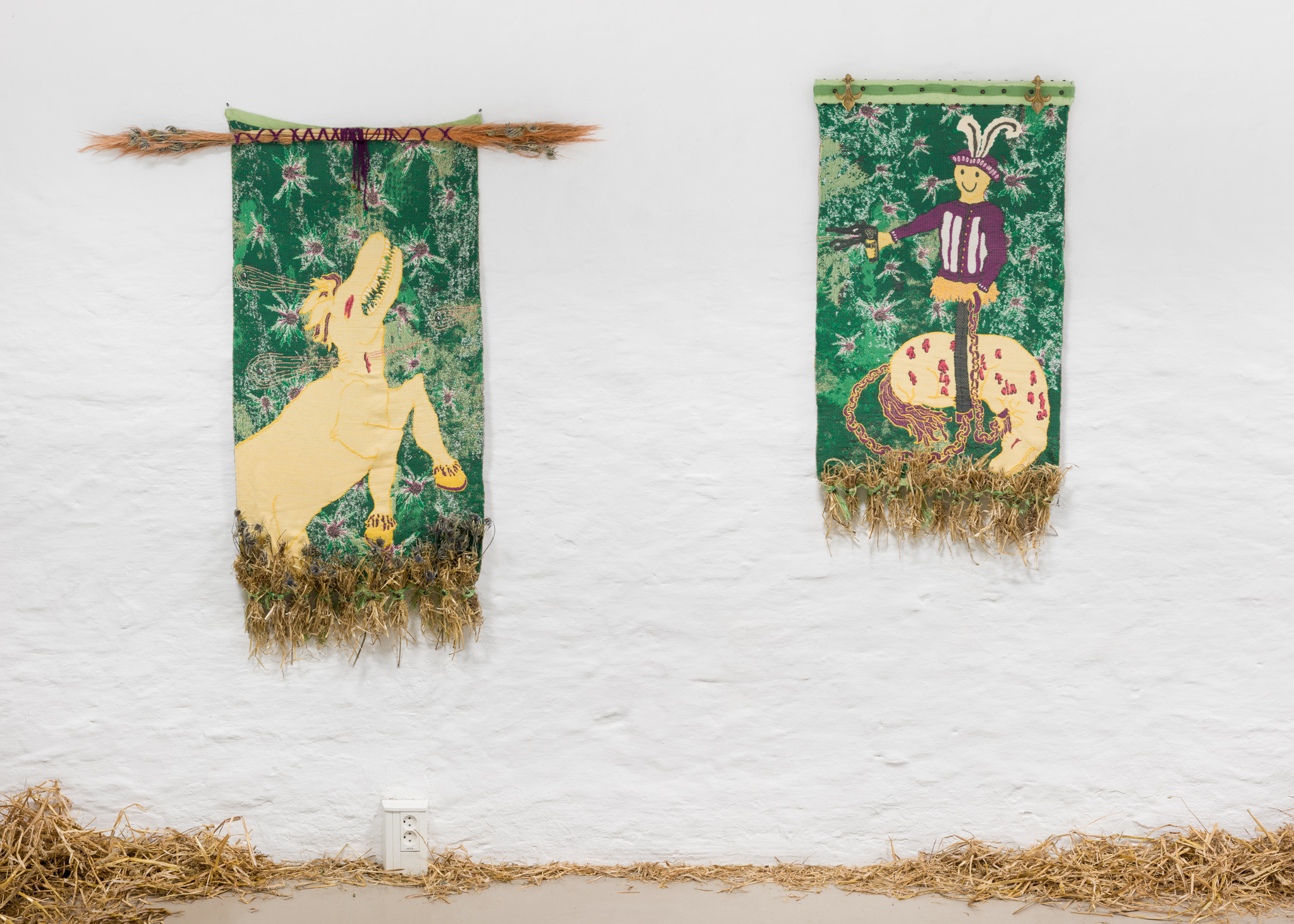
Olivia Rode Hvass, "Hand holding memories (de dårlige minder holder i hånd)", TC2-jacquard digital tapestry, cotton, yarn, cushioning, hay and this- tles, 2022
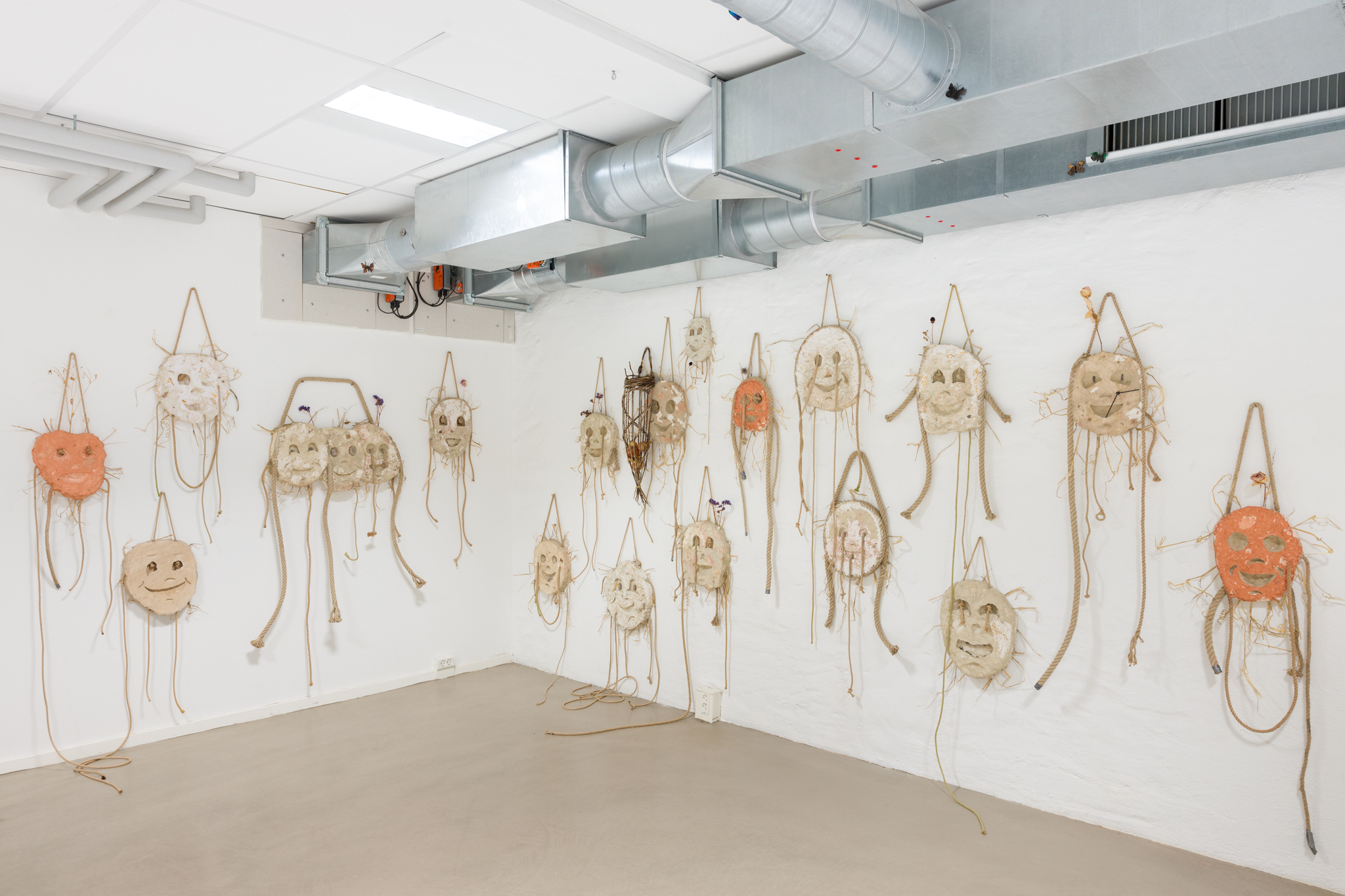
Lars Worm, "Born Happy", plaster, clay, rope, straw, flowers, rocks, brass, plastic, acrylic paint, 2021-2023
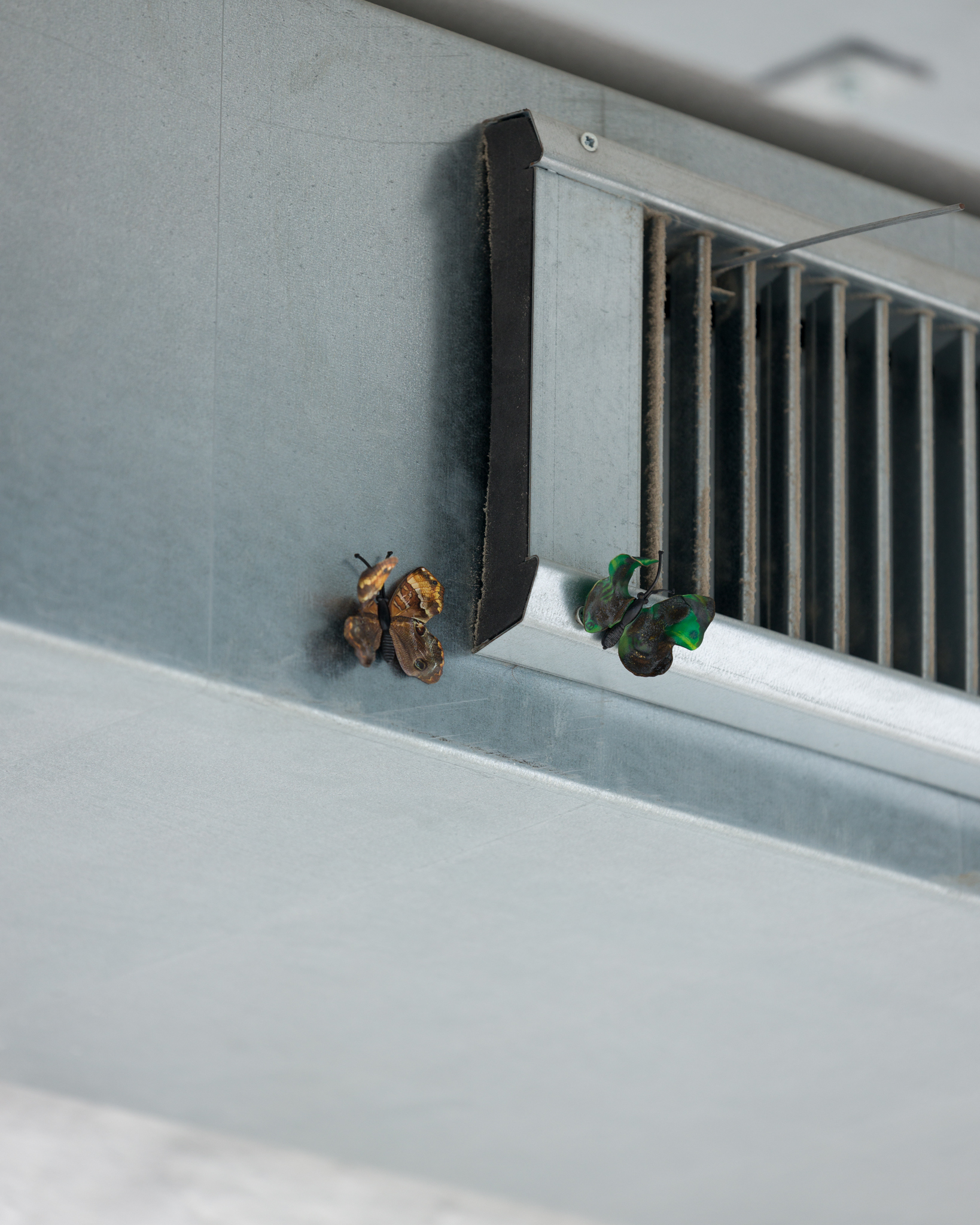
Olivia Rode Hvass, "In Captivity but No Longer Dead", burned 3D butterflies (plastic), 2022
”The rumour has it that you lived in the forest for a long time before you came here. You lived off what you found under the bark of the trees. You stuffed your face with soil.”
Rasmus Daugbjerg, The Rumour
Small talk, burbling, prattling, chatting, gossiping. A Danish saying goes about like this: Beloved child has many names – and, I would add, many faces, human and more-than-human. Maybe the child is a queer child, a cyborg, neither man nor woman, animal or machine, but something indefinable in between. The Marxist philosopher Silvia Federici has been interested in how the English word gossip has developed through time with the beginning of the witch hunt processes; etymologically, the word originally referred to a godmother, a friend or a female confidante, but the meaning of the word changed with the increasingly dominating patriarchal structures in Europe in the 1600s and the frequent persecution of especially women or queer people from the lower classes. Gradually the word instead became associated with women’s lazy, unproductive and conspiratorial chatter as a means to devalue the woman in this historical context. Today the meaning of the word gossip as the act of telling rumours is still firmly cemented into the English language. In the word chatter some of the same matters are hidden; with the connection between chatter and gossip the feminine is connected to the more-than-human, in a devaluation of both. Words and meanings are sticky. To prattle on can be understood as having an informal conversation, to jabber away without thinking – without using your so-called intellect. It is said that women do chatter, the same is said about birds.
In a capitalistsociety where productivity, the always-busy bee, is applauded, everything that isn’tseen as productive from the context of the market economy or resists the structures that keep capitalism going, is devaluated. And that is exactly why it can also be an act of resistance to be lost in your own thoughts around the pond, alone or with others, to talk about everything or nothing, to conspire, breathe together, to chatter like birds or women or something in between.
In ‘Chatter ‘round the pond’ the outcasts of the village get a chance to speak in a collectively established space, where they speak together, often in many tongues, across the differences they constitute – maybe what lives in the pond will also climb to land to take part. The exhibition is a space where a shift in or a questioning of established norms can take place. The artworks chat unproductively and speculatively with each other and with the viewer, they could be a place of refuge, a cooling edge of the woods, where you can step in to get a break from the exhaustion and cultivation of scarcity that constitute late capitalism.
What gathers the artists in ‘Chatter ‘round the pond’ around the pond is their interest in the sculptural and its aspect of performativity. An interest in the expansive space, materiality and liveliness of mythology. Pastel and Goth, the ornamental and the dark, the things that stick out. An urge to mix soft materials with hard. Their practices reach back in time but at the same time into the future to create what Donna Haraway calls a “thick now”.
The works by Frederik Exner are marked by an interest for the ritual and the mythological, to seek the boundaries between different life forms, between the human and more-than-human. Olivia Rode Hvass’ art is interested in the encounters between the country and the city, between myths and people, and through installation environments and charming tapestries, she pulls threads to both medieval traditions and modern industry. ASMAs practice is on a constant move on the edge of different worlds, between the real and the imaginative, in their transformation of what is, a renegotiation of symbols and archetypes. Lars Worm seeks the materials available around him in daily life to create artworks that play with the illustrative and the surreal and which both contain humour and tenderness. This is how these artists create a heterogeneous and still relating, chatting community.
Andrea Fjordside Pontoppidan


